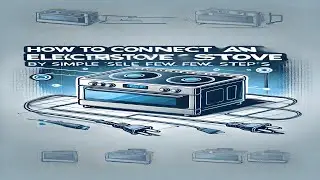How to connect an electric stove by yourself in simple few steps
Connecting an electric stove by yourself requires caution as you're working with high voltage. Here’s a step-by-step guide for safely connecting it. However, always ensure you follow local codes and consider professional help if unsure.
What You'll Need:
A 240V outlet (compatible with electric stoves)
Power cord (3-prong or 4-prong, depending on your outlet)
Screwdriver
Voltage tester
Electrical tape (optional)
Steps to Connect an Electric Stove:
1. Turn Off the Power:
Switch off the circuit breaker for the 240V stove outlet in your main electrical panel.
Use a voltage tester to confirm the outlet is not live before proceeding.
2. Check the Outlet Type:
Verify if you have a 3-prong or 4-prong outlet. This determines the type of power cord you'll use.
A 4-prong outlet includes a separate ground wire, which is safer, while a 3-prong combines ground and neutral.
3. Attach the Power Cord:
Locate the connection terminal on the stove (usually at the back behind a small metal cover plate).
3-prong cord:
The middle wire is the neutral (white or middle prong), and the two outer wires are hot (red/black).
4-prong cord:
The ground wire (green or bare) attaches to the grounding screw.
The neutral wire (usually white) connects to the middle terminal.
The two hot wires (black and red) connect to the outer terminals.
Use the appropriate screwdriver to securely fasten each wire.
4. Secure the Cord:
After attaching the wires, secure the power cord in place by screwing the strain relief bracket (or a similar support) around the cord to prevent it from being pulled out.
5. Reattach the Cover:
Once all the wires are connected, replace the cover plate over the stove’s terminal block.
6. Test the Installation:
Turn the circuit breaker back on.
Turn on the stove to check if it's receiving power and functioning correctly.
7. Final Check:
If everything works as expected, ensure all connections are tight and wires are safe from any damage or strain.
Safety Tips:
DO NOT attempt this if you're unfamiliar with electrical work or uncomfortable with high-voltage systems.
Always turn off power at the breaker box and double-check with a voltage tester.
Consider using electrical tape to wrap connections for extra safety.
If you're not confident in completing this process, it's best to hire a licensed electrician to ensure the job is done safely.































